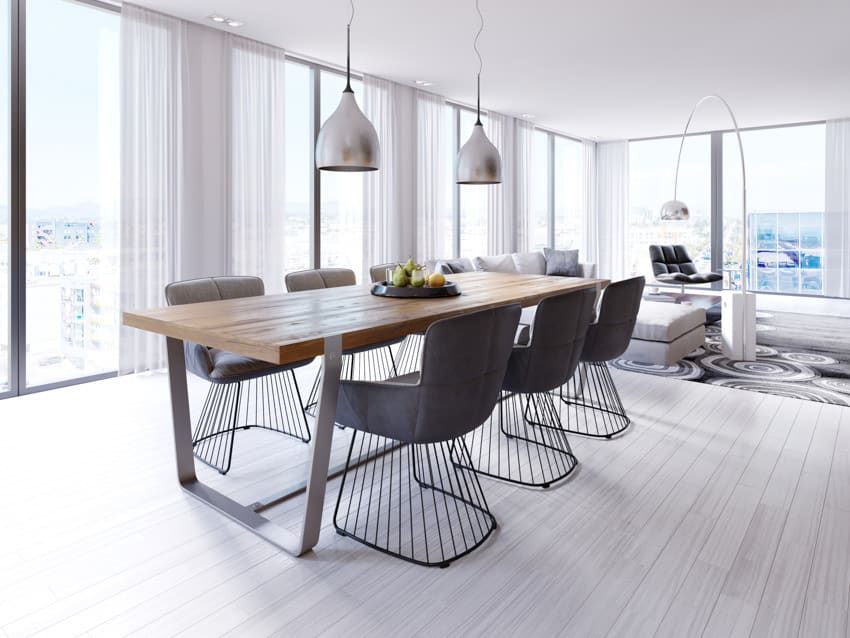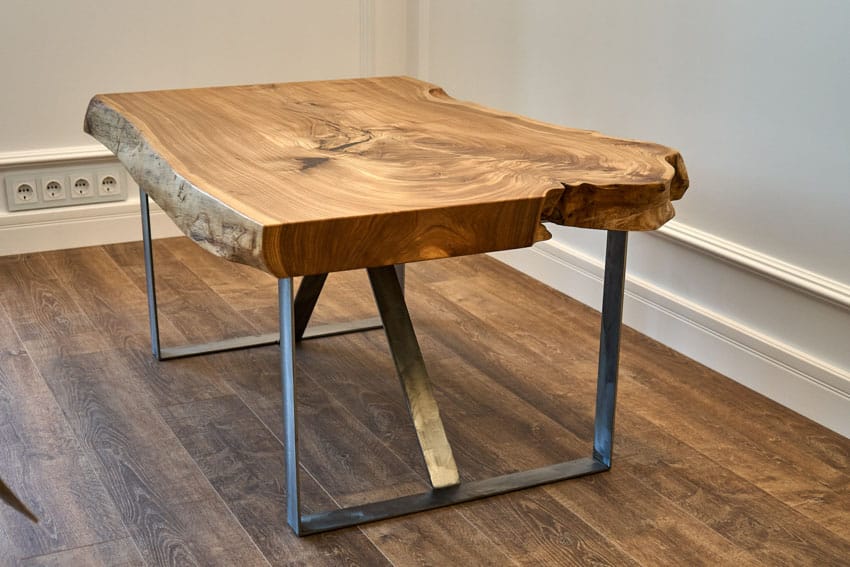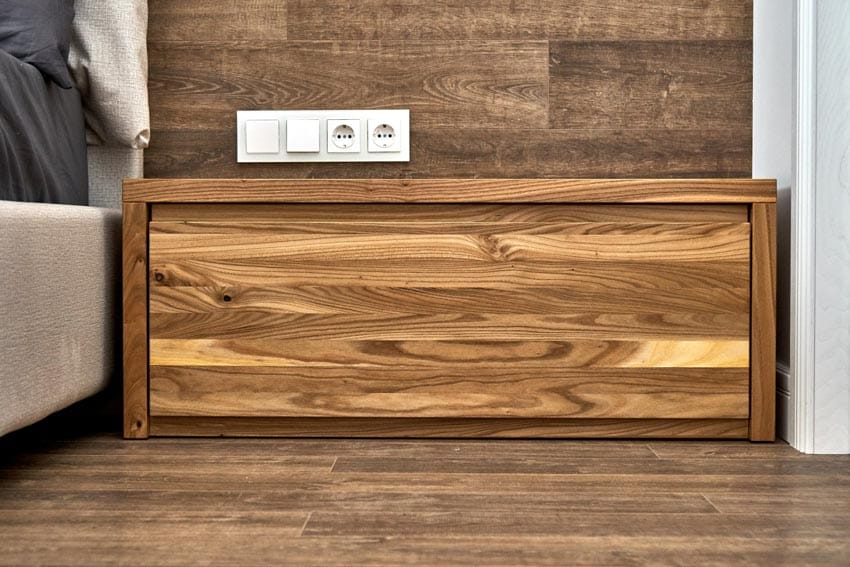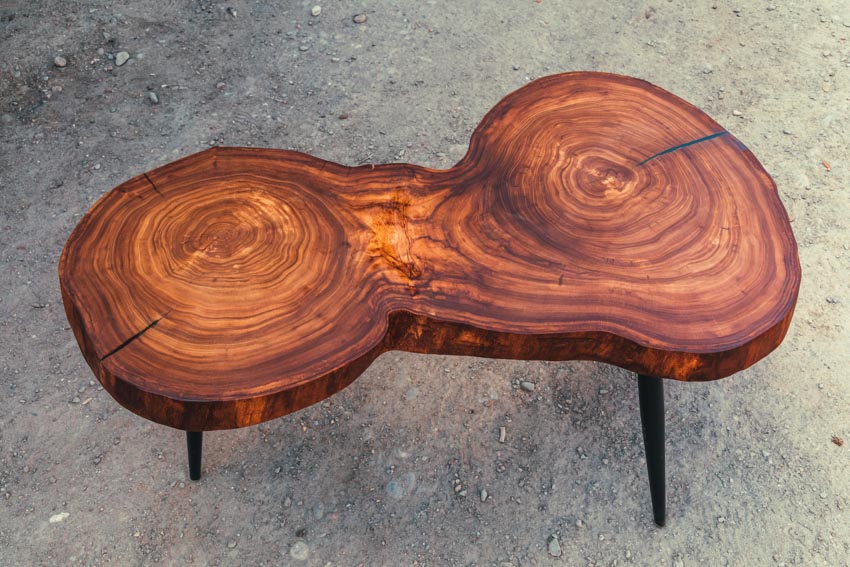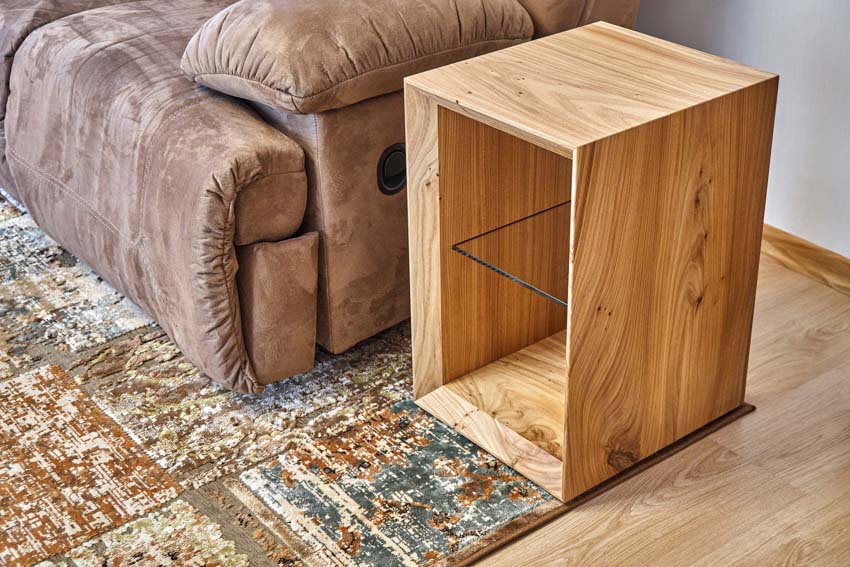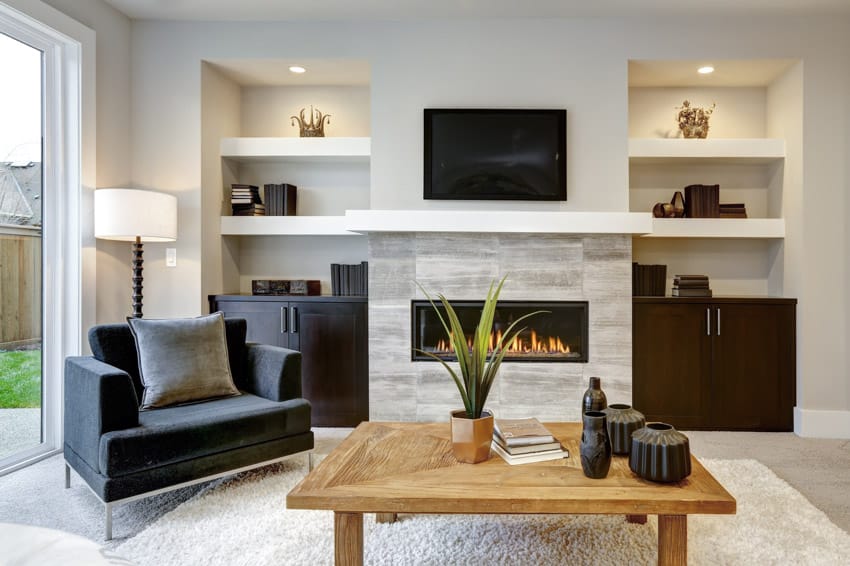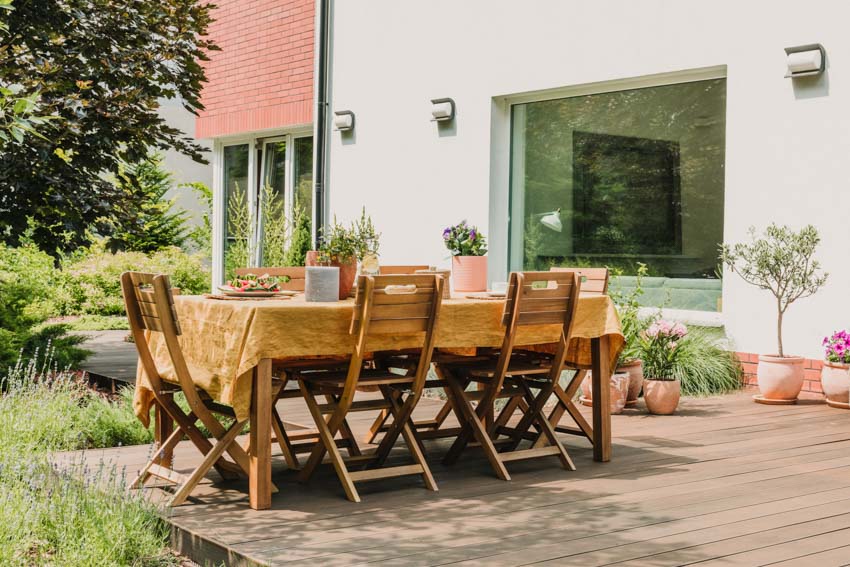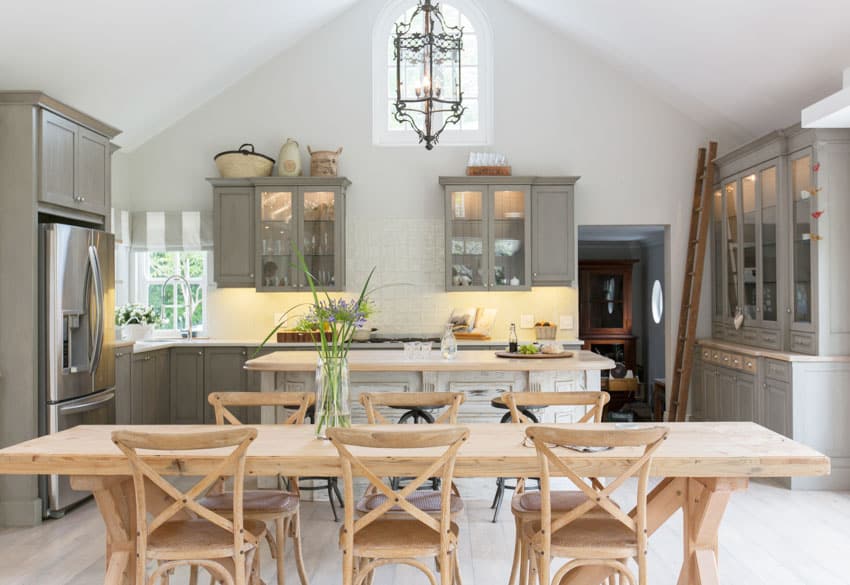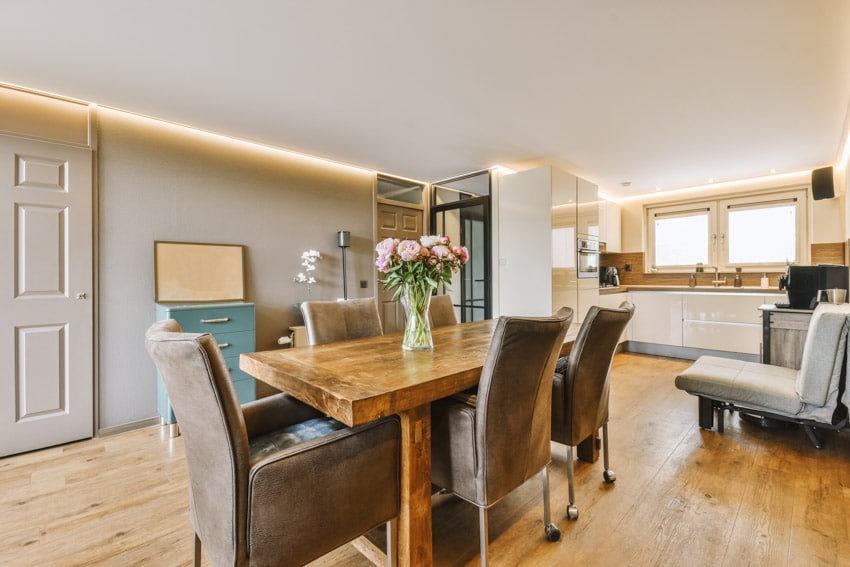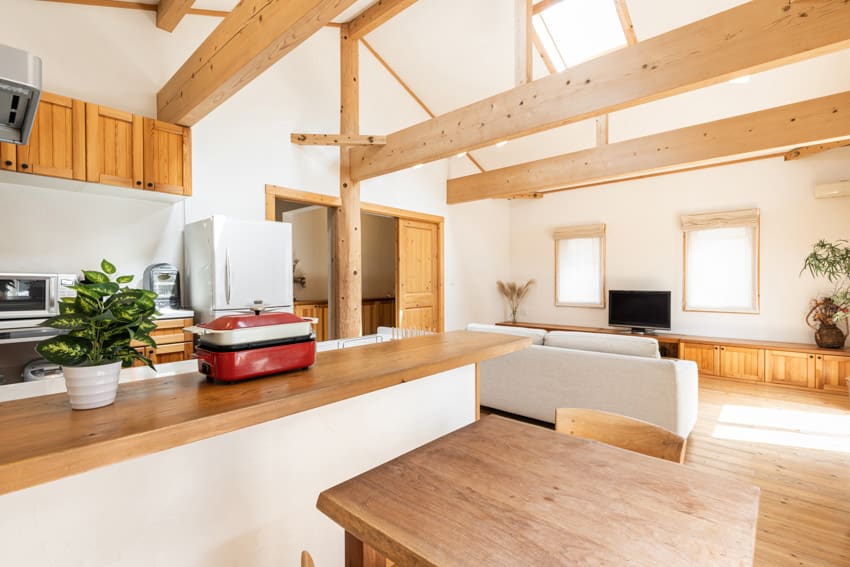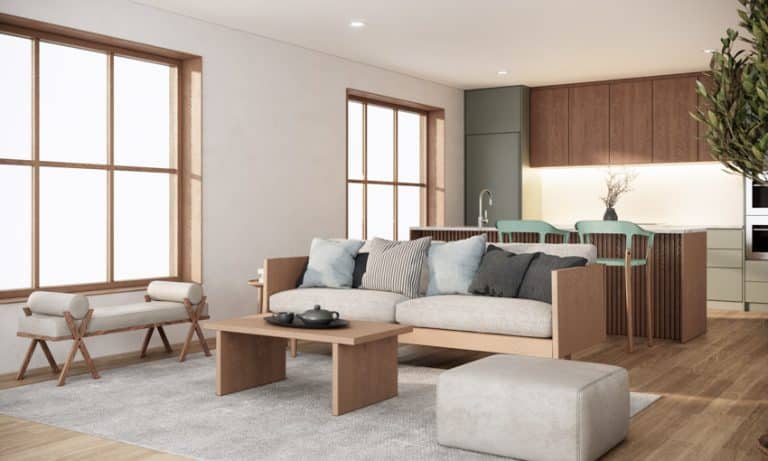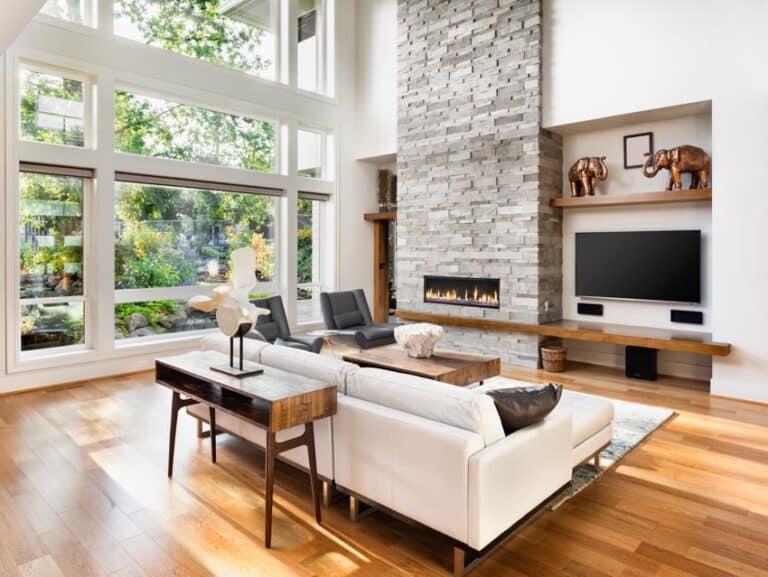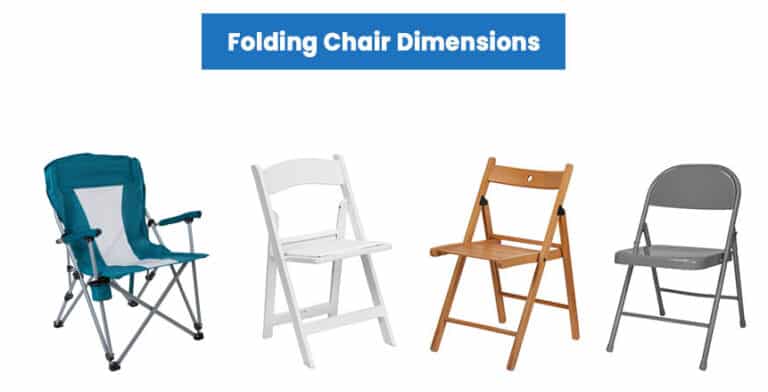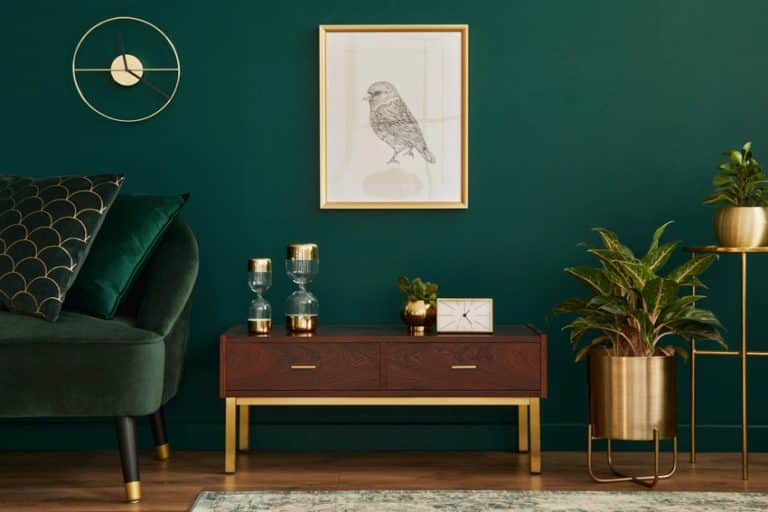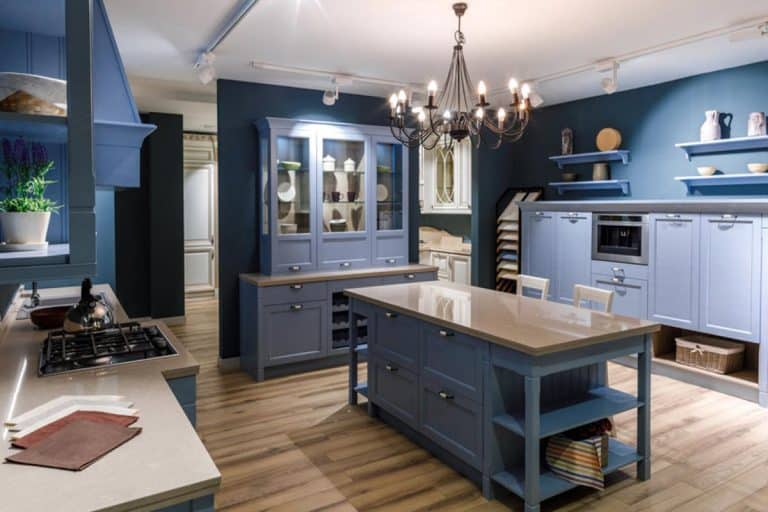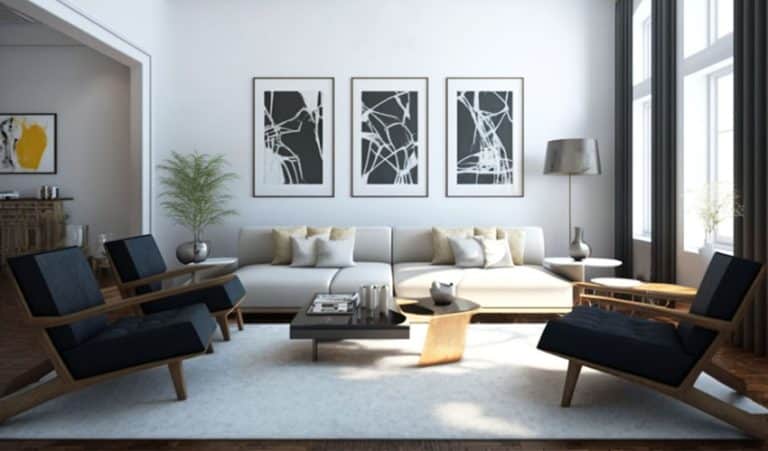Why Choose Elm Wood Furniture (Uses, Grain & Quality)
Due to its gorgeous grain arrangement and strong physical attributes, elm wood has become one of the most desirable types of wood on the market. However, despite the fact that it originates from a hardwood tree, it is quite soft.
Elm wood furniture features a distinctive and eye-catching wood pattern. Elm wood’s appearance and durability make it an appealing choice for furniture and other interior elements that must bear a great deal of stress.
Because of its hybrid properties of hardwoods and softwoods, woodworkers claim that this wood is ideal for any construction project. Is it really suitable for woodworking tasks such as furniture-making? Read on to find out.
What Is Elm Wood?
Elm wood has some notable qualities that make it well-suited for furniture-making. According to specialty wood supplier Dutch Crafters, this hardwood is distinguished by its attractive, lively grain patterns featuring unique color variations. In addition to its visual appeal, elm offers functional benefits: its dense, strong timber provides durability and shock resistance.
The wood holds its shape well when bent using steam. These characteristics make elm ideal for weight-bearing furniture and components where structural integrity is needed. The wood’s strength, workability, and handsome figuring contribute to its popularity among discerning woodworkers and furniture enthusiasts.
Elm wood is highly prevalent in the northern hemisphere’s cooler climates. It is primarily prevalent in Europe, Asia, and North America, although it is also widespread in China and Mexico.
Elm wood is straightforwardly derived from the elm tree and is greatly valued for its visual attractiveness and longevity. Its wood is used to make a variety of pieces of furniture and other wooden objects, including chairs, coffins, and cabinets.
Moreover, this tree has always been a favorite hardwood choice among homeowners and furniture builders. The trees were established in numerous communities during the 19th and 20th centuries because they provide a lot of shade.
It has heartwood tones ranging from light to moderate reddish-brown as well as sapwood that is slightly off-white. It has a distinctive development of spiral arrangement and interlocking wood grain, as well as a rough and irregular texture. The interlocking grain has distinct swirls and waves that set it apart.
According to Galerie 44, natural elm wood furniture lends itself well to both contemporary and traditional decors. With its minimalist shapes and rich grain, elm introduces modern flair while retaining natural warmth.
Galerie 44 suggests pairing elm pieces like chairs, tables or bookcases with cozy textiles for a Scandinavian look. For more of a Wabi-sabi aesthetic, they recommend combining elm with raw materials like stone, terracotta and linen. While adaptable, elm wood always brings a touch of effortless elegance.
Is Elm A Hardwood? (Janka Rating)
Yes, this lumber is a hardwood. Its Janka rating is 830. Thus, it is considered a soft hardwood. This implies it is robust and durable, although it is softer than other hardwoods.
Its interlocking grain increases its toughness and resistance to splitting. It is extremely durable and stress-resistant. It can be utilized for furniture and household materials that require shock absorption for these purposes.
Opting for authentic elm wood furniture is a long-term investment, according to a statement from the furniture supplier Oak for Less. Alternative materials that try to imitate the elm wood look simply cannot match its enduring qualities.
The distinctive interlocking grain patterns make elm wood exceptionally resistant to splitting over years of use, lending it an unparalleled durability. Rather than settling for mimicry, Oak for Less advises selecting real elm wood for furniture built to withstand the test of time. This natural material offers unmatched resilience and endurance.
Wood Graining of Elm
Its overlapping wood grain defies classification. This form of grain develops when the wood grain fibers change orientation as the tree matures. As a result, the grain twists and swirls, giving it a strong and gorgeous appearance rather than being modest and reserved.
Plus, its interlocking grain pattern makes it split-resistant, which also renders it a durable hardwood. However, due to the interlocking grain, power tools are recommended for handling it to prevent tearing out.
Elm Furniture Quality
Elm can be applied to most types of furniture styles, and the quality it provides is quite acceptable. It has strong compression and bending strength and is resistant to cracks and splits. Despite being softer than other hardwoods, elms are, without a doubt, tougher and heavier than numerous softwoods that we use in our daily lives.
Furthermore, this species contains both hardwood and softwood qualities since it is a type of soft hardwood. It is durable and resistant to environmental influences. It steams and bends decently and can be shaped and turned as desired, making it ideal for producing furniture elements such as different types of tables or chair legs, seats, framing, and shelving.
Because of the interlocking grain composition, the fibers expand in the other orientation as the tree matures. Generally, this tree produces high-quality furniture pieces. The swirling interlocking grain design is quite lovely. It gives your furniture a bold, one-of-a-kind appearance.
Its interlocking grain pattern, on the contrary, makes it sometimes unyielding and stiff. As a result, cutting with hand tools is more laborious at times, and there is a risk of wood pulling out. When dealing with type of lumber, power tools are advised for optimal outcomes and to eliminate wood tearouts.
Is Elm Good For Furniture?
Definitely! To prove it, here are some examples of the pieces of furniture that you can make with this type of wood:
• Chairs
• Tables
• Drawers
• Bathroom shelves
• Bed frames
• Baskets
• Boxes
• Decorative boards
• Furniture parts such as table legs or chair seats
• Musical instruments
• Baseball bats and hockey sticks
Evidently, it can be used for practically any furniture-making construction process. Elm indoor furniture is both elegant and long-lasting. They provide your house, business, or work environment with a distinct appeal. It is also a luxurious, odor-free, robust, and solid lumber, which makes it ideal for indoor furniture.
It features an interlocking grain pattern that lends a distinct aesthetic to your indoor furniture while also making it stain-resistant and incredibly durable. Furthermore, its color ranges from reddish brown to a pale shade.
Its color, combined with the most distinct types of wood grain patterns, creates a gorgeous look that is ideal for indoor furnishings. Indeed, numerous furniture makers are attempting to replicate its aesthetics because the genuine ones are so pricey.
The scarcity of lumber is the main factor for the high cost of the material. This material can be difficult to find because it is prone to pest infestation, and it is difficult to find pieces that are in perfect condition. Even if it is positioned indoors, we strongly advise you to finish it properly with stain, paint, or clear coating.
If you employ this for bathroom or kitchen fixtures, the untreated type tends to collect moisture quickly and decay or rot. To prolong its lifespan, it needs to be sealed and finished.
Ultimately, its durability is increased by thorough finishing. Also, this lumber accepts paints and stains beautifully. The process of finishing is quite easy, requiring minimal effort.
Is Elm a Great Choice for Outdoor Furniture?
Elms are an excellent choice for indoor furnishings, so we expect them to be a satisfactory option for outdoor fixtures at least. Unfortunately, these are not a decent candidate for outdoor furniture as it is susceptible to fungal and insect assaults, offer a small amount of rot resistance, and require a top-quality sealer before being placed outdoors.
Hence, if you really want to use this material for your outdoor fixtures, you have to ensure that you will seal them carefully and thoroughly so that they can withstand the harsh elements of the environment. With extensive finishing, this material can effectively endure external factors such as rainfall, UV radiation, and bug, insect, and mold assaults.
It is a delicate hardwood. Its porosity structure is made up of either straight or wavy braided bands. Environmental moisture can infiltrate its fibers and harm its heartwood, causing it to rot.
On a positive note, there are numerous strategies for safeguarding outdoor wooden fixtures from the weather. Since they absorb stains quite well, staining would be the greatest way to preserve outdoor furnishings, as the latter forms a wonderful protective layer that functions as a shield against the external elements.
Water and other elements will not be able to permeate the sealing barrier and cause harm to the lumber. This lumber does not readily split. It has a high level of shock absorption. When it comes into touch with water, it does not degrade quickly. In comparison to other trees, elms have excellent rot resistance. As a result, sealed ones are mostly found in boat construction.
Furniture Made of Red Elm
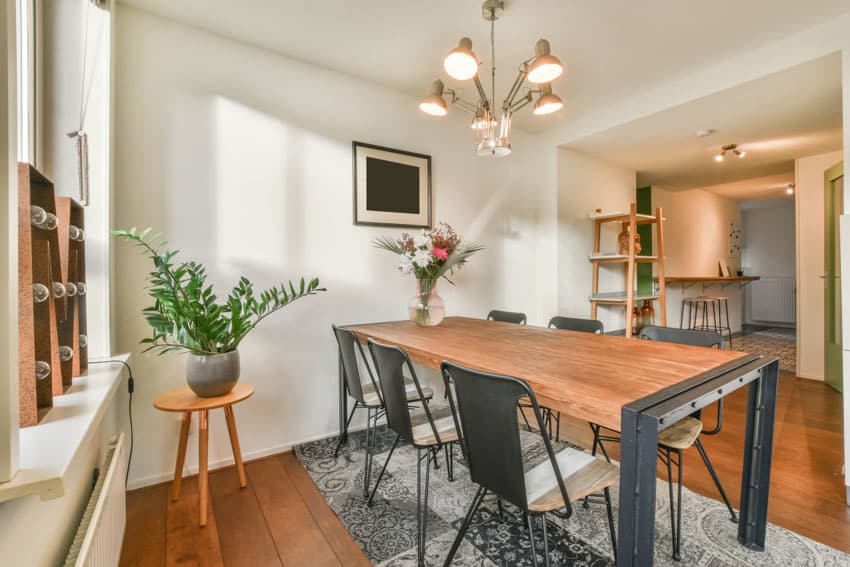
However, due to its susceptibility to insect infestation, it is sometimes regarded as non-durable. Its living trees are vulnerable to Dutch elm disease as well. It can be difficult to work with when building furnishings, especially on quartersawn surfaces.
On the plus side, glues, dyes, and finishes adhere effectively to its surface. This lumber generally keeps nails and screws strong and reacts well to steam bending.
Quality of American Elm Furniture
This species thrives in low, rich, mountainous soil, frequently near stream banks. It is pale grayish-brown and sometimes pinkish-brown. It has a delicately wavy structure and is fine and straight-grained. It has visible development rings, similar to ash wood. It is hard, hefty, rigid, and shock-resistant.
Although difficult to weather, this deciduous tree has outstanding steam-bending capabilities and water resistance once dry. Meanwhile, splitting and working with this lumber using hand tools is tough. Thus, machine tools are more effective. American elms, however, provide a good surface for holding screws and nails.
Chinese Elm
Because of its exceptional hardness, durability, and resilience to breaking, the Chinese elm is believed to be the greatest of all elms used for cutting tool handles and related applications. Its heartwood is reddish-brown to pale tan or flesh-colored, whereas the sapwood is frequently off-white.
The most common applications for this variety include cabinets, paneling, hardwood flooring, and specialized applications, including longbow manufacturing and equipment handles. Yes, although not that popular, this species produces high-quality decor.
Elm Vs Oak
Although oak trees are broader, elms grow a lot taller. The latter possesses non-invasive root structures and can withstand poor soils far better than oaks. However because oak trees are tougher and more long-lasting than elms, they are more frequently used in building materials like oak flooring, cabinets, and other home furnishings.
See more related content in our article about the different types of teak wood on this page.

